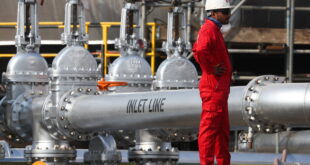Higher shipments of Russian crude oil to China may saddle European importers with a fatter bill. an industry consultancy warned at the end of last year. noting the latest stage of Russia’s Eastern pivot: the launch of the expanded East Siberia-Pacific Ocean pipeline that would lift Urals crude supply to China twofold. to 30 million tons annually.
FGE said in a note quoted by Bloomberg that Russia will start moving more Urals eastward right after the launch of the pipeline extension. at a rate of 160.000 bpd. The overall increase of Russian crude shipments to China. according to the consultancy. could be around 200.000 bpd.
This means less oil for Europe. which is Russia’s number-one oil client. This only highlights the significance of Moscow’s Asian pivot amid lingering European sanctions following the 2014 annexation of Crimea and Russia’s involvement in separatist conflicts in the Ukraine.
In 2016. Russia exported an average 3.7 million barrels daily to European countries. compared with less than a million bpd to China. according to figures from the Energy Information Administration (EIA). In percentage figures. Europe accounted for 70 percent of Russia’s 2016 crude oil exports. while the share of China was just 18 percent.
The rise in Chinese exports has been quite steep since 2014: as of November last year. Russia shipped 1.3 million barrels of oil daily to China. All the latest signs point to further growth. However. exactly how much this would hurt European buyers is unclear.
The Urals is currently trading at a discount of about $4 to Brent crude but WTI’s discount to the international benchmark is $6 a barrel. In other words. Russia’s diverting of crude oil from Europe to China could be an opportunity for U.S. exporters as long as they can keep their transport costs low enough. Europe will probably be grateful for the diversification.
Over the long term. things are even more uncertain. Clearly. Russia has prioritized its relationship with China: In addition to the ESPO expansion. Gazprom is on track to complete the Power of Siberia gas pipeline by 2019. The 2.500-km mammoth of a pipeline will pump 1.3 trillion cu ft of gas to China annually.
The country is already the third-largest consumer of natural gas in the world. behind the U.S. and Russia. and is expected to show the strongest demand growth over the coming decades—propelling it to second place by 2040 as the economy shifts away from coal.
This soaring demand has already created shortages in parts of the country. A recent report by Eurasia Daily suggested the Power of Siberia will be essential in avoiding future gas shortages. Would that take gas away from Europe? It’s unlikely given Gazprom’s 30+-percent market share in Europe. and besides. there’s enough gas for everyone. What might happen is China overtaking Europe as Russia’s biggest gas export market at some point in the future. especially if Russia–EU relations continue to be strained.
 Iran Energy News Oil, Gas, Petrochemical and Energy Field Specialized Channel
Iran Energy News Oil, Gas, Petrochemical and Energy Field Specialized Channel




